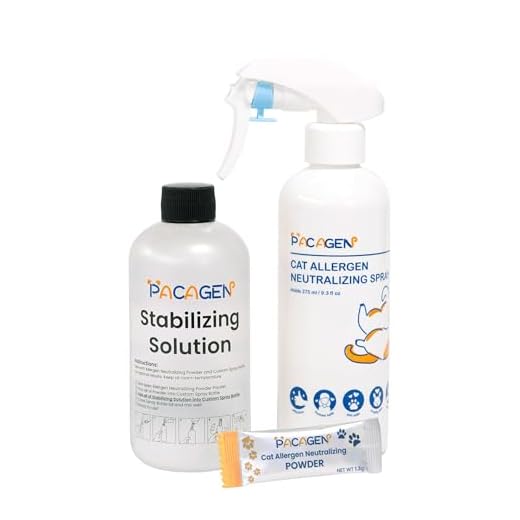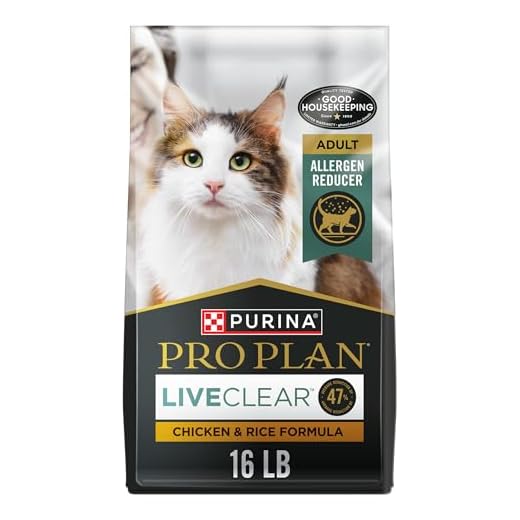

It’s essential to monitor the frequency and amount of fur that comes off my coat. Regular grooming not only reduces the amount of loose strands but also helps identify any irregularities in my skin or fur condition. If I notice clumps of fur or bald patches, it’s a sign to consult a veterinarian for a professional evaluation.
Diet plays a significant role in maintaining a healthy coat. A balanced meal rich in omega-3 and omega-6 fatty acids promotes a shiny and resilient fur. I make sure to incorporate high-quality, protein-rich foods that support my overall health. Supplements can also be beneficial, but they should be discussed with my human before adding them to my diet.
Stress can drastically impact fur condition. Environmental changes, loud noises, or the introduction of new pets can create anxiety, leading to excessive grooming. It’s crucial for my human to provide a calm atmosphere with safe spaces for me to retreat. Interactive playtime can also help alleviate stress and keep me engaged.
Parasites, such as fleas and mites, are notorious for causing irritation and fur loss. Regular checks and preventive treatments are vital to keep these unwanted visitors at bay. My human should ensure that I am on a proper flea control regimen to maintain my comfort and health.
Common Causes of Hair Loss in Cats
Here are some frequent reasons for my coat thinning:
- Allergies: Environmental factors like pollen or dust mites can trigger reactions, leading to itching and subsequent fur loss.
- Parasites: Fleas, mites, and ticks irritate the skin, prompting scratching and biting that result in bald patches.
- Infections: Bacterial or fungal infections, including ringworm, can cause localized fur loss and skin irritation.
- Hormonal Imbalances: Conditions such as hyperthyroidism or adrenal gland disorders may affect my fur density.
- Stress: Changes in environment or routine can lead to anxiety, causing excessive grooming and fur removal.
- Nutritional Deficiencies: Lack of essential nutrients, particularly fatty acids and proteins, can weaken the coat and lead to breakage.
Regular vet visits help identify these issues early, allowing for timely treatment and care.
Identifying Allergies in Your Cat
If I notice itching, redness, or excessive grooming, I suspect allergies. Common triggers include certain foods, dust, pollen, and certain materials. Observing any patterns related to my environment or diet helps narrow it down.
A change in diet might lead to skin issues, so I keep track of new treats or meals introduced. If I experience gastrointestinal problems alongside skin irritations, food allergies are a strong possibility.
Pollen and dust can also play a role; outdoor time or indoor cleaning routines may coincide with symptoms. I recommend keeping a log of activities and symptoms to spot trends.
If I suspect allergens, consulting with a veterinarian is essential. They may suggest allergy testing, which can clarify the source of discomfort. A hypoallergenic diet trial could also be recommended to pinpoint food sensitivities.
<p Lastly, maintaining a clean living space and minimizing exposure to potential irritants can alleviate symptoms. Regular grooming helps too, as it reduces the chances of allergens settling on the coat.
Understanding Parasite Infestations
If you notice unexpected patches or thinning areas, consider checking for parasites. Fleas, ticks, and mites are common culprits that can lead to excessive grooming and subsequent bald spots. Regularly inspecting the fur and skin is essential. You can use a fine-toothed comb to help spot fleas or flea dirt, which resembles tiny black specks.
Additionally, mange caused by mites can provoke intense itching, prompting your furry friend to scratch or bite at their skin, resulting in hair loss. If you suspect this, a veterinarian can perform skin scrapings to identify the type of infestation and recommend appropriate treatment.
Preventative measures are key. Regularly treating with veterinarian-approved flea and tick preventatives can help avoid infestations. Keeping the living environment clean and vacuuming often can also minimize the risk of parasites. To keep your pet entertained and reduce stress–which can exacerbate grooming habits–consider providing videos for cats to watch fish.
If the issue persists, consult your vet for a thorough examination and tailored treatment plan. Early intervention is vital for maintaining health and comfort.
The Role of Stress in Feline Hair Loss
Stress can significantly contribute to the decrease in fur density. If my environment changes–like moving to a new home or the arrival of a new pet–I might react by pulling out my own fur. This behavior, known as psychogenic alopecia, is often triggered by anxiety. It’s essential to monitor any alterations in my surroundings that could lead to such feelings.
Recognizing Signs of Stress
Signs include excessive grooming, hiding, or changes in appetite. If I start to exhibit these behaviors, it’s a red flag. Engaging in calming activities like interactive play or providing a safe space can help alleviate my anxiety. Consider using pheromone diffusers or calming treats designed specifically for felines.
Preventive Measures
Routine is key. Establishing a consistent daily schedule for feeding and playtime can create a sense of security. If you notice ongoing issues, consulting with a veterinarian may provide additional strategies to manage stress effectively. Also, ensure that my living space is enriched with toys and scratching posts to keep me entertained and relaxed. For more information on various products, check this link.
When to Consult a Veterinarian
If I notice excessive fur loss, it’s time to seek professional advice. Signs that require immediate attention include visible bald patches, persistent scratching or biting at the skin, and any noticeable changes in behavior or appetite. If my skin appears red, inflamed, or has sores, a vet visit is necessary.
Specific Symptoms to Monitor
Keep an eye out for unusual symptoms. If I develop a rash, my skin feels oily, or there’s an unpleasant odor, these may indicate a medical issue. Sudden weight loss or changes in litter box habits might also suggest underlying problems that need assessment.
Timing Matters
Don’t wait too long before reaching out. Early intervention can prevent complications and lead to more effective treatment. If my condition worsens or doesn’t improve after a few days of observation, it’s best to consult a veterinarian promptly.
Tips for Managing Your Coat Health
Regular grooming is key. Brush me at least two to three times a week to remove loose strands and prevent matting. This helps keep my fur clean and reduces the amount of fur that ends up on your clothes and furniture.
Dietary Considerations
High-quality food plays a significant role in fur condition. Look for options rich in omega fatty acids, which promote a shiny, healthy coat. Supplements like fish oil can also enhance fur health.
Hydration Matters
Ensure I always have fresh water available. Proper hydration supports skin health and prevents dryness, which can lead to excessive flaking and fur loss.
| Grooming Frequency | Dietary Tips | Hydration Tips |
|---|---|---|
| 2-3 times a week | Choose high-quality food | Fresh water always available |
| Daily during shedding season | Consider omega fatty acid supplements | Monitor water intake |
Environmental factors can also impact coat health. Maintain a clean living area to minimize allergens and irritants that may affect my skin. Regularly wash my bedding and vacuum to reduce dust and dander.
Pay attention to any changes in my behavior or appearance. If I seem uncomfortable or my coat condition worsens, consult a veterinarian for personalized advice.









